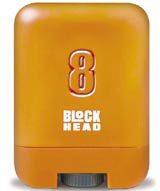Charity demands clearer warnings on sun damage

Cancer Research is calling for designers to create more responsible sunscreen packaging, as British holiday makers depart for the sun and skin cancer cases continue to rise.
The charity says packaging and branding for sunscreen products must focus more heavily on safety to drive home the message that sun bathing can cause skin cancer. ‘There’s too much small print,’ asserts Sara Hiom, co-ordinator of Cancer Research UK’s SunSmart sun exposure awareness campaign. ‘Health messages must be more prominent.’
But while Hiom encourages driving home health and safety messages, she falls short of calling for re-branding of sunscreens from cosmetic to ‘preventative health’ goods – a move that would make creams cheaper by unburdening them of VAT.
‘Sunscreens are the one concession youngsters make in the sun,’ she says. ‘They refuse to sit in the shade or wear hats, but they will use sunscreen because they feel it’ll make them look beautiful, so [packaging] needs [to retain] that cosmetic element.’
Designers need to convey both safety and aspirational messages, says David Beard, creative director at Brandhouse WTS, which recently created packaging for new sunscreen brand Blockhead. It dispensed with ‘wordy, difficult to read small print’, limiting itself to a dominant standalone number indicating factor strength on the front. Health and safety information was placed back-of-pack in larger-than-
usual bullet-pointed typography.
‘Sunscreen health messages often blind consumers with science,’ ventures Beard. The group has used the Blockhead bottle’s functional shape to deliver aspirational messages and ‘create a funky accessory for any situation’.
Beard also criticises a tendency among designers to fall back on seaside-oriented graphics, claiming it reinforces the British misconception that sun protection is only required on the beach. ‘The palm tree thing ignores the reality that you also need sunscreen while skiing and on the street,’ he says.
Meanwhile, sunscreen brand Piz Buin took an ‘ethical’ stance by dispensing with varying gradations of brown on its packaging according to protection strength, in favour of one corporate shade.
‘The old system was problematic because it could have been seen as suggesting that the darker brown packages contained products that were for people who wanted to bake in the sun,’ concedes Robert Moberly, managing director of Lewis Moberly, which updated the brand’s packaging last year.
The Helen Hamlyn Research Centre has also called for on-pack health messages to be made more digestible. But the centre’s co-director Jeremy Myerson says that while designers and brand managers have a role to play in ‘ethical’ sunscreen packaging, the onus is not exclusively their’s.
‘We must beware of making designers responsible for peoples’ lifestyle choices,’ he warns. ‘If you lie in the sun for 12 hours, even wearing cream, you’ll burn. That has to be the individual’s call.’
A recent ICM research reveals 50 per cent of people use no sun protection at all or are reluctant to purchase sunscreen above factor eight for fear that they will not get a fashionable tan.
But chemist chain Lloyds Pharmacy last week claimed that a policy of clearing shelves of sunscreens below factor 15 had not negatively impacted sales.
-
Post a comment




